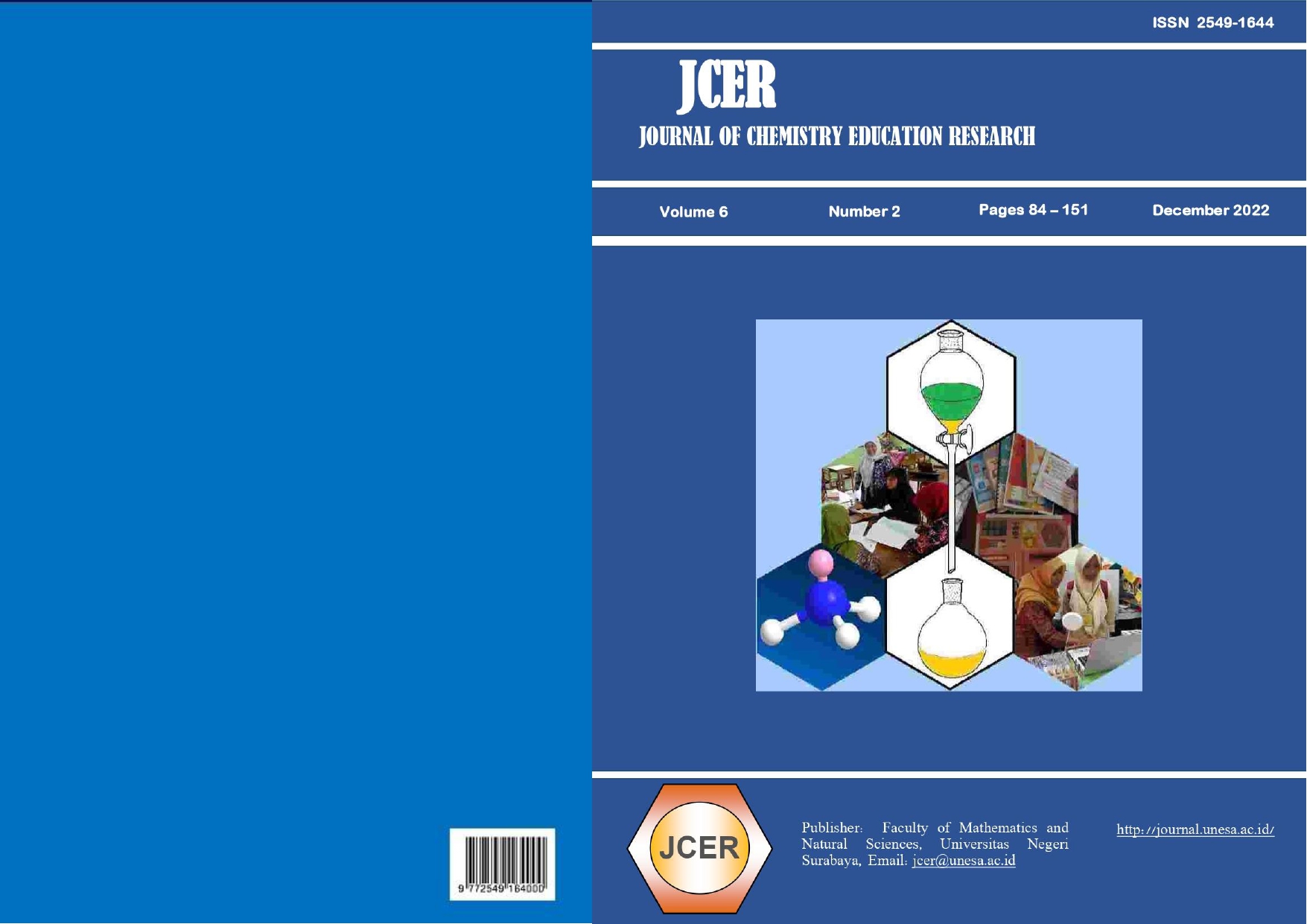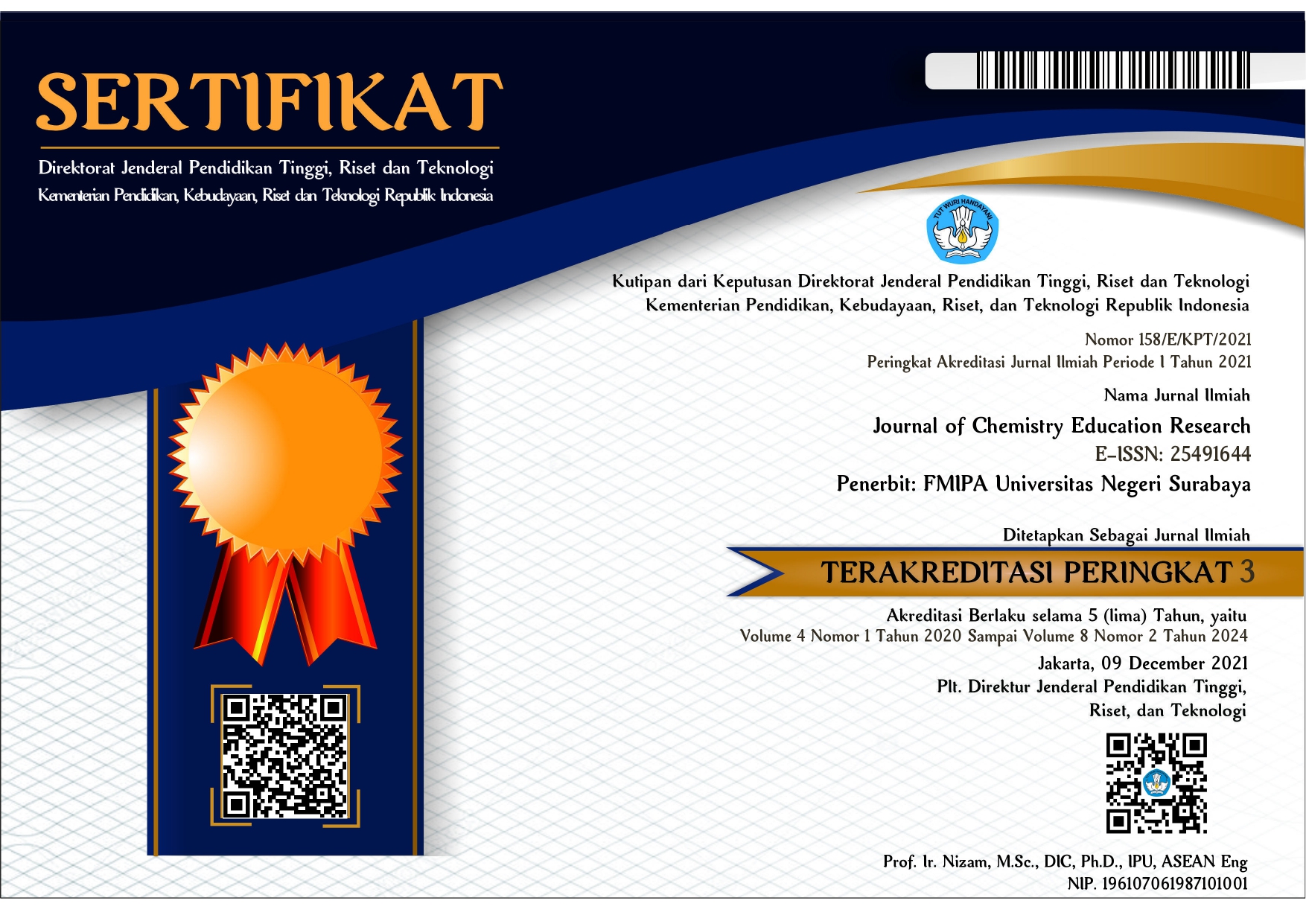HOW WORTHY IS DALTON’S PURSUIT OF CHEMICAL ATOMISM FOR THE PROSPECTIVE TEACHERS? A CASE OF KOTEBE UNIVERSITY OF EDUCATION, ETHIOPIA
DOI:
https://doi.org/10.26740/jcer.v6n2.p138-151Keywords:
Atom, Atomism, Atomic Theory, Chemical Atomism, History and Philosophy of ScienceAbstract
Atom possesses controversial ontological accounts even in a single discipline such as chemistry. Its essence as a reality and inclusion in science education has been subjected to numerous philosophical and scientific debates. The educational literature also shows that the ancient corpuscular notion is dominantly portrayed within the curriculum and instruction of many educational settings. The fundamental problem is that the chemists, educators, philosophers, and historians of chemistry themselves haven’t had a substantial agreement on any of the philosophical and scientific accounts due to their longstanding philosophical divide between the different positions of positivism and realism. Neither has the historical perspective of philosophy and science been reasonably acknowledged in science/chemistry education. We aimed in this interpretative case study to figure out how much Dalton’s pursuit of the chemical atomism is worth to 22 purposely selected and interviewed prospective teachers. The resulting transcripts were analyzed using HPS, the seven milestones of its case study. As a result, one major and two minor themes were found none of which match any of the themes of the milestones. Moreover, the entire narrative lacks some essential perspectives and contexts of HPS in general and Dalton’s experimentations in particular. Misjudgment of his indivisibility notion, for example, is a drawback associated with this limitation. Thus, more inquiries are needed to be conducted in the long run into the curriculum and classroom practice while departmental discussions on such issues are suggested in the short run.
References
May, L. 2010. Atomism before Dalton. In Atoms in Chemistry: From Dalton's Predecessors to Complex Atoms and Beyond; Giunta, C. (Eds). ACS Symposium Series; American Chemical Society: Washington, DC. https://www.scribd.com/document/82483111/Atoms-in-Chemistry- From-Dalton-s-Predecessor-s-to-Complex-Atoms-and-Beyond-C-Giunta-ACS-2010-WW.
Bensaude-Vincent, B. & Simon, J. 2008. Chemistry: The impure science, London: Imperial College Press.
Chalmers, A. F. 1999. What is this thing called Science? 3rd Edition. Hackett Publishing Company Inc, Cambridge, Indianapolis. https://ebookppsunp.files.wordpress.com/2016/06/alan_chalmers_what_is_this_thing_called_scie ncebookfi-org.pdf.
Radiman, Sh. 2018. Knowledge Map between Kalam Atomism and Modern Physics. A Paper presented at KLIKS3 Conference (19th - 22nd March 2018). https://www.academia.edu/36079565/KNOWLEDGE_MAP_BETWEEN_KALAM_ATOMISM_AND_MODERN_PHYSICS.
Banchetti-Robino, M. P. 2020. The Changing Relation between Atomicity and Elementarity. What Is A Chemical Element? 87 - 108. https://doi.org/10.1093/OSO/9780190933784.003.0006.
Rocke, A. 1984. Atomism in the Nineteenth Century: From Dalton to Cannizzaro, Ohio: Ohio State University Press, Viewed 12 May, 2021. https://digital.case.edu/islandora/object/ksl%3Ax633gj985.
Taber, K.S. 2000. Teaching chemistry without (too much emphasis on) atoms? Royal Society of Chemistry Teacher Fellowship Discussion, Education-line, London, October 2000, <http://www.leeds.ac.uk/educol/documents>.
Taber, K.S. 2003. The Atom in the Chemistry Curriculum: Fundamental Concept, Teaching Model or Epistemological Obstacle. Foundations of Chemistry, 5, 43 - 84.
Niaz, M., & Maza, A. 2011. Nature of Science in General Chemistry Textbooks. Dordrecht, The Netherlands: Springer. http://www7.uc.cl/sw_educ/educacion/grecia/plano/html/pdfs/biblioteca/LIBROS/LibNiazMaza.pdf.
Merriam, S. B. 2009. Qualitative research: a guide to design and implementation (Revised and expanded from Qualitative research and case study applications in education). The Jossey-Bass higher and adult education series; Retrieved from www.wiley.com.
Downloads
Published
Issue
Section
License

This work is licensed under a Creative Commons Attribution-NonCommercial 4.0 International License.
 Abstract views: 298
,
Abstract views: 298
, PDF Downloads: 389
PDF Downloads: 389



